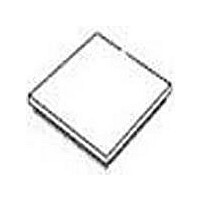PEF2256EV22NP Lantiq, PEF2256EV22NP Datasheet - Page 149

PEF2256EV22NP
Manufacturer Part Number
PEF2256EV22NP
Description
Manufacturer
Lantiq
Datasheet
1.PEF2256EV22NP.pdf
(533 pages)
Specifications of PEF2256EV22NP
Number Of Transceivers
1
Screening Level
Industrial
Mounting
Surface Mount
Operating Temperature (min)
-40C
Operating Temperature (max)
85C
Lead Free Status / RoHS Status
Supplier Unconfirmed
- Current page: 149 of 533
- Download datasheet (7Mb)
®
FALC
56
PEF 2256 H/E
Functional Description T1/J1
7.1.15.3 CAS Bit-Robbing (T1/J1, serial mode)
The signaling information is carried in the LSB of every sixth frame for each time slot.
The signaling controller samples the bit stream either on the receive line side or if
external signaling is enabled on the receive system side on port RSIG. Receive signaling
data is stored in the registers RS(12:1).
Optionally the complete CAS multiframe is transmitted on pin RSIG (FMR5.EIBR = 1).
The signaling data is clocked out with the working clock of the receive highway (SCLKR)
together with the receive synchronization pulse (SYPR). Data on RSIG is transmitted in
the last 4 bits per time slot and are time slot aligned to the data on RDO. In ESF format
the A, B, C, and D bits are placed in bit positions 5 to 8 of each time slot. In F12/72 format
the A and B bits are repeated in the C and D bit positions. The first 4 bits per time slot
can be optionally fixed high or low. The FS/DL time slot is transmitted on RDO and RSIG.
During idle time slots no signaling information is transmitted. Data on RSIG are only valid
if the freeze signaling status is inactive. With FMR2.SAIS all-ones data is transmitted on
RDO and RSIG. Robbed bits can be forced to one on RDO for all channels or only for
those that are not selected as "cleared channels".
Updating of the received signaling information is controlled by the freeze signaling
status. The freeze signaling status is automatically activated if a loss-of-signal, or a
loss-of-frame-alignment or a receive slip occurs. The current freeze status is output on
port FREEZE (RP(A:D)) and indicated by register SIS.SFS. If SIS.SFS is active updating
of the registers RS(12:1) is disabled. Optionally automatic freeze signaling is disabled by
setting bit SIC3.DAF.
After CAS resynchronization an interrupt is generated. Because at this time the signaling
is still frozen, CAS data is not valid yet. Readout of CAS data has to be delayed until the
next CAS multiframe is received.
7.1.15.4 CAS Bit-Robbing (T1/J1, µP access mode)
The signaling information is carried in the LSB of every sixth frame for each time slot.
Receive data is stored in registers RS(12:1) aligned to the CAS multiframe boundary.
To relieve the µP load from always reading the complete RS(12:1) buffer every 3 ms the
®
FALC
56 notifies the µP by interrupt ISR0.RSC only when signaling changes from one
multiframe to the next. This interrupt can be suppressed for "cleared channels"
®
(CCR1.RSCC = 1). Additionally the FALC
56 generates a receive signaling data change
pointer (RSP1/2) which directly points to the updated RS(12:1) register.
Because the CAS controller is working on the PCM highway side of the receive buffer,
slips disturb the CAS data.
7.1.15.5 Bit Oriented Messages in ESF-DL Channel (T1/J1)
®
The FALC
56 HDLC channel 1 supports the DL-channel protocol for ESF format
according to ANSI T1.403 specification or according to AT&T TR54016. The HDLC and
Data Sheet
149
Rev. 1.1, 2005-06-13
Related parts for PEF2256EV22NP
Image
Part Number
Description
Manufacturer
Datasheet
Request
R

Part Number:
Description:
Manufacturer:
Lantiq
Datasheet:

Part Number:
Description:
Manufacturer:
Lantiq
Datasheet:

Part Number:
Description:
Manufacturer:
Lantiq
Datasheet:










